Are you considering installing artificial grass but wondering if it’s truly eco-friendly? Look no further! This article explores the environmental impact of artificial grass, including water conservation, sustainable materials used, recycling and disposal methods, and carbon footprint. By comparing artificial grass to natural turf in terms of eco-friendliness, we provide evidence-based insights to help you make an informed decision. Don’t miss out on this comprehensive guide to determine if artificial grass is the right choice for you and the planet.
The Environmental Impact of Artificial Grass

The environmental impact of artificial grass isn’t well understood yet. However, there are some known benefits of artificial grass for urban areas. One major advantage is its ability to conserve water. Traditional lawns require a significant amount of watering, but artificial grass eliminates the need for irrigation altogether. This not only helps to reduce water consumption but also decreases the use of harmful pesticides and fertilizers that can pollute our waterways.
Another benefit is the reduced maintenance required for artificial grass compared to natural turf. With natural lawns, regular mowing and trimming are necessary tasks that contribute to noise pollution and air pollution from gas-powered equipment. Artificial grass eliminates these maintenance activities, resulting in a cleaner and quieter environment.
On the other hand, it’s important to consider the impact of artificial grass on wildlife habitats. Natural lawns provide essential habitats for insects, birds, and small mammals. The introduction of artificial grass may disrupt these habitats by reducing food sources and nesting areas.
Water Conservation and Artificial Grass
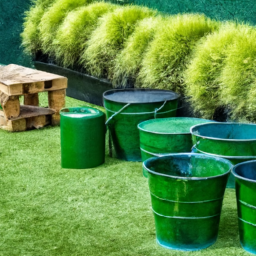
Water conservation is one of the key benefits of using synthetic turf. By installing artificial grass in your yard, you can significantly reduce your irrigation needs and contribute to water conservation efforts. Unlike natural grass, which requires regular watering to stay green and healthy, artificial turf does not need any irrigation at all.
Synthetic turf is specifically designed to be drought-resistant. Its construction allows for excellent drainage, preventing water from pooling on the surface. The backing materials used in artificial grass also help with moisture management by allowing rainwater or other liquids to pass through easily.
The irrigation reduction achieved with artificial grass can have a significant impact on water consumption. According to studies, replacing natural lawns with synthetic turf can save up to 55 gallons of water per square foot every year! This reduction in water usage not only helps conserve this precious resource but also reduces strain on local water supplies during periods of drought.
In addition to saving water, artificial grass offers other environmental benefits as well. It eliminates the need for harmful pesticides and fertilizers that are often used to maintain natural lawns. Furthermore, it reduces carbon emissions by eliminating the need for gas-powered lawn equipment like mowers and trimmers.
Sustainable Materials Used in Artificial Grass
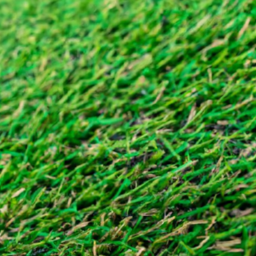
When it comes to sustainable materials, you’ll be pleased to know that many artificial turf products are made from recycled materials. These natural alternatives offer various environmental benefits. One of the primary advantages is the reduction in waste sent to landfills. By using recycled materials such as old tires and plastic bottles, artificial grass helps divert these items from ending up in landfills where they can take hundreds of years to decompose.
Not only does the use of recycled materials help reduce waste, but it also conserves valuable resources. Artificial grass eliminates the need for water, fertilizers, and pesticides typically used for natural lawns. This results in significant water savings and reduces chemical runoff into waterways.
Another environmental benefit of artificial turf is its ability to reduce carbon emissions. Natural grass requires regular mowing using gas-powered lawn mowers which contribute to air pollution. In contrast, once installed, artificial grass requires minimal maintenance, eliminating the need for frequent mowing.
Recycling and Disposal of Artificial Grass
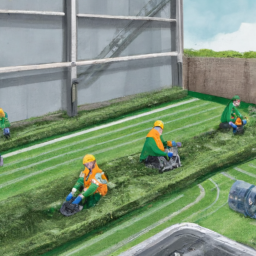
If you’re considering replacing your artificial turf, it’s important to know the proper methods for recycling and disposing of it. Artificial grass is made from various materials, such as polyethylene and polypropylene, which can be recycled if done correctly. One of the most common recycling methods for artificial grass involves separating the different components, such as the backing material and fibers, and then processing them separately.
The recycling process starts with removing the infill material and separating it from the turf. The infill material can often be reused in other synthetic turf installations or repurposed for other purposes. Once separated, the backing material can be recycled into new products like plastic lumber or used in road construction.
Disposing of artificial grass in landfills should always be a last resort due to its environmental impact. When sent to landfills, artificial grass takes up valuable space and does not decompose naturally. Additionally, some components may release harmful chemicals into the environment over time.
To minimize landfill impact and promote sustainability, it is crucial to explore recycling options for your old artificial grass. Many companies offer recycling services specifically designed for synthetic turf disposal. These companies have specialized equipment that can efficiently separate and recycle different components of artificial grass.
Carbon Footprint of Artificial Grass Production
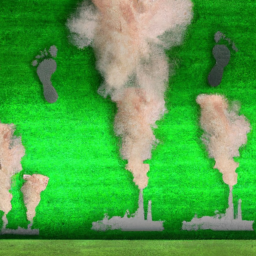
To minimize your carbon footprint, consider researching the production processes involved in creating synthetic turf. Artificial grass production can have a significant impact on carbon emissions and environmental sustainability. The manufacturing of artificial grass involves various stages, such as harvesting raw materials, processing them into fibers, and assembling the final product.
The first step in the production process is extracting raw materials like petroleum or natural gas for synthetic fibers. These non-renewable resources contribute to greenhouse gas emissions and climate change. Additionally, energy-intensive processes are required to convert these raw materials into usable fibers.
Furthermore, the manufacturing of artificial grass involves transportation, which adds to carbon emissions. Raw materials are often sourced from different locations worldwide before being processed and shipped to manufacturers. This transportation contributes to additional greenhouse gas emissions.
To address these concerns, some manufacturers are adopting more sustainable practices in their production processes. For example, they may use recycled or renewable materials instead of petroleum-based ones. They may also invest in energy-efficient technologies to reduce their carbon footprint during manufacturing.
Comparing Artificial Grass to Natural Turf in Terms of Eco-Friendliness
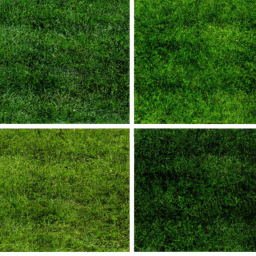
Now let’s shift our focus to comparing artificial grass with natural turf in terms of eco-friendliness. When it comes to maintenance requirements, artificial grass has the upper hand. Unlike natural turf, which needs regular watering, mowing, and fertilizing, artificial grass requires minimal upkeep. This means less water consumption and reduced use of chemicals that can harm the environment.
In terms of cost comparison, while the initial installation cost of artificial grass may be higher than natural turf, long-term savings can be significant. Natural turf requires ongoing expenses for maintenance such as irrigation systems, lawnmowers, fertilizers, and pesticides. On the other hand, artificial grass eliminates these costs over time.
Moreover, when considering the environmental impact over its lifespan, studies have shown that artificial grass has a lower carbon footprint compared to natural turf due to reduced maintenance requirements and eliminated use of harmful chemicals.
However, it is important to note that there are other factors to consider when evaluating the overall eco-friendliness of artificial grass versus natural turf. These include resource depletion during production and end-of-life disposal. Evaluating these aspects comprehensively will provide a more accurate picture of their environmental impact.
Frequently Asked Questions
How Long Does Artificial Grass Typically Last Before It Needs to Be Replaced?
Artificial grass typically lasts for about 15 to 20 years before it needs to be replaced. The longevity of artificial grass depends on several factors such as the quality of the materials used, maintenance practices, and the amount of foot traffic it receives. Regular cleaning, brushing, and occasional infill top-ups can help extend its lifespan. However, after a certain point, signs of wear and tear may become more evident, indicating that replacement is necessary to maintain its appearance and functionality.
Can Artificial Grass Be Recycled Once It Reaches the End of Its Lifespan?
Artificial grass can be recycled once it reaches the end of its lifespan. Recycling options for artificial grass include repurposing the materials or breaking them down into smaller components for reuse. This helps to reduce the environmental impact by preventing these materials from ending up in landfills. By recycling artificial grass, we can contribute to a more sustainable approach to landscaping and minimize waste. It is important to explore local recycling facilities or contact manufacturers for specific guidelines on how to properly recycle artificial grass.
What Are the Maintenance Requirements for Artificial Grass Compared to Natural Turf?
Artificial grass maintenance is generally easier compared to natural turf. With artificial grass, you don’t have to worry about mowing, watering, or fertilizing. It requires minimal upkeep, such as regular brushing to prevent matting and occasional rinsing to remove dirt. Natural turf, on the other hand, requires more attention and resources for maintenance like regular mowing, watering, fertilizing, and even aerating. So if you’re looking for a low-maintenance option, artificial grass might be a suitable choice for you.
Does Artificial Grass Contribute to Air Pollution or Emissions?
Artificial grass has gained popularity due to its low maintenance requirements compared to natural turf. However, it is important to consider its impact on air quality and environmental sustainability. Artificial grass does not contribute to air pollution or emissions directly, as it doesn’t require mowing or the use of gas-powered equipment. However, the manufacturing process and disposal of artificial grass can have negative environmental consequences if not managed properly. It’s crucial to choose eco-friendly materials and proper waste management practices for a more sustainable option.
Are There Any Health Risks Associated With the Use of Artificial Grass?
Health concerns and safety risks associated with the use of artificial grass should be taken into consideration. It is important to note that some studies have raised concerns about potential risks, such as increased injury rates due to a harder surface. Additionally, there may be health risks associated with the chemicals used in artificial grass production. However, it is crucial to evaluate these concerns alongside the benefits before making any conclusions about the overall impact on health and safety.
Conclusion
In conclusion, artificial grass can be considered a more environmentally friendly option compared to natural turf. Its water conservation benefits, use of sustainable materials, and potential for recycling and disposal contribute to its eco-friendliness. Additionally, while the production of artificial grass does have a carbon footprint, this can be offset by its long lifespan and reduced need for maintenance. Ultimately, considering all these factors, it is evident that artificial grass offers a comprehensive solution that aligns with eco-conscious practices.